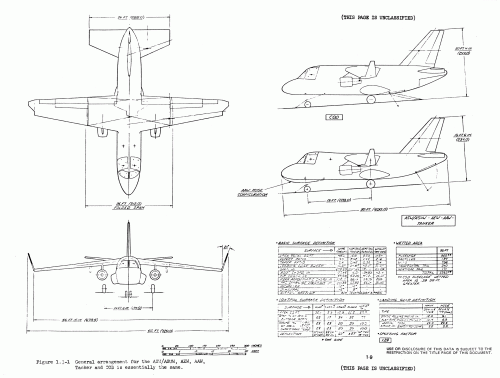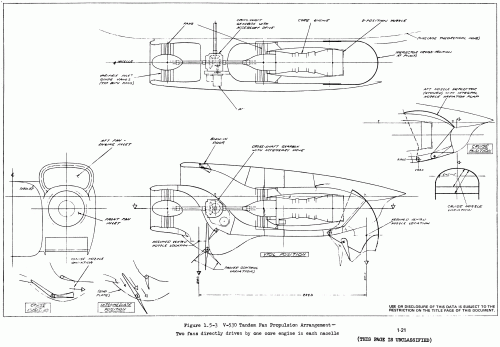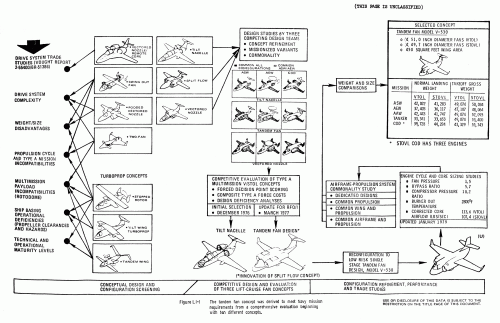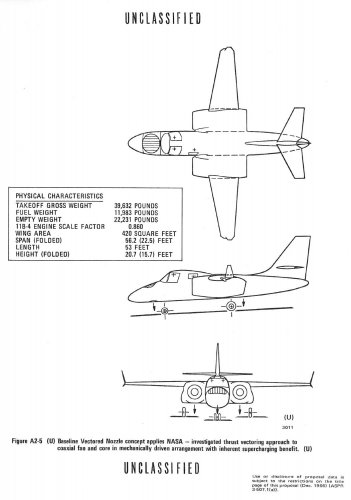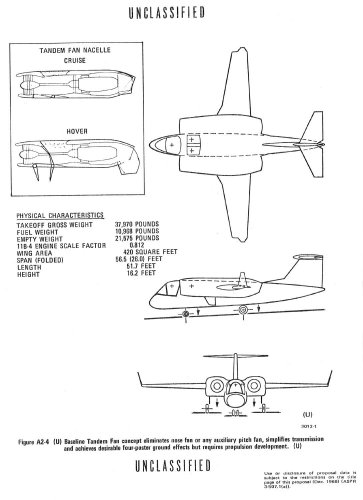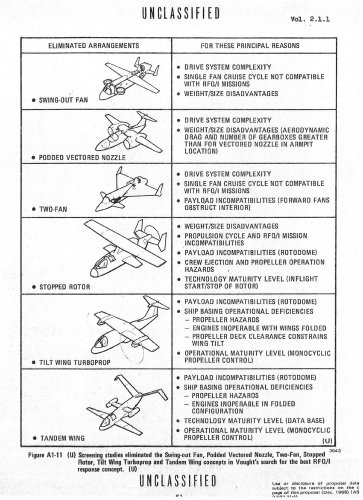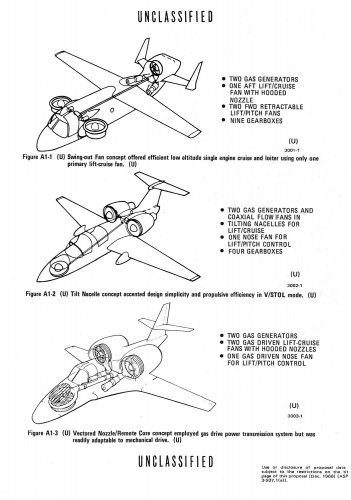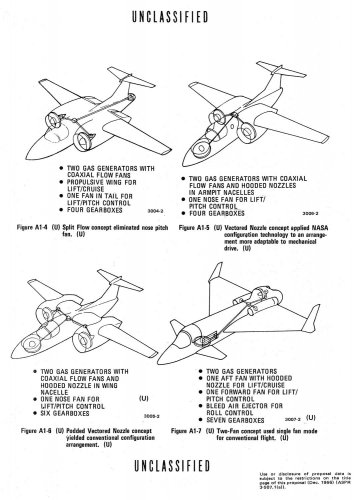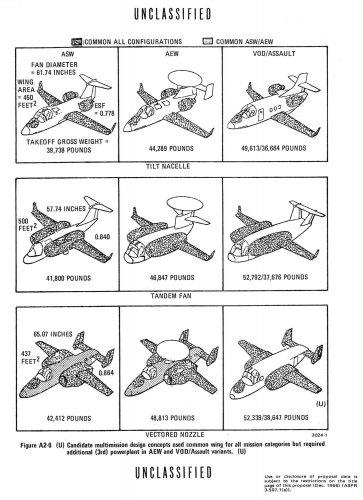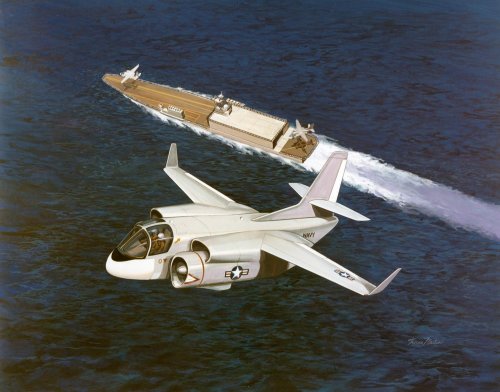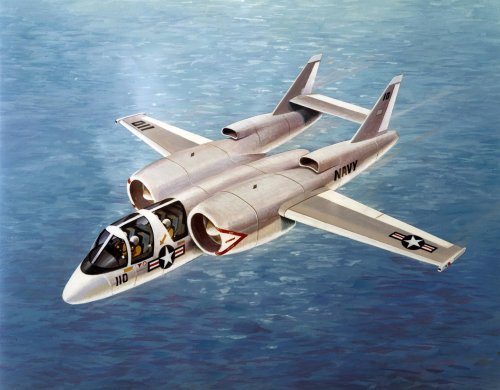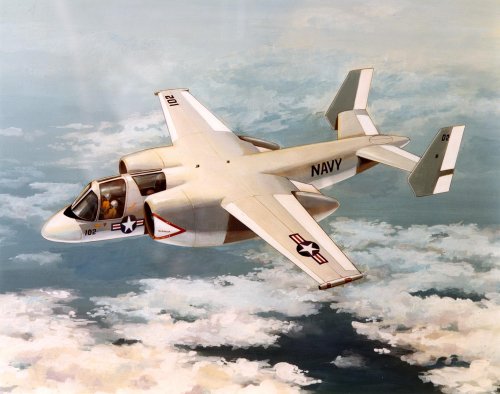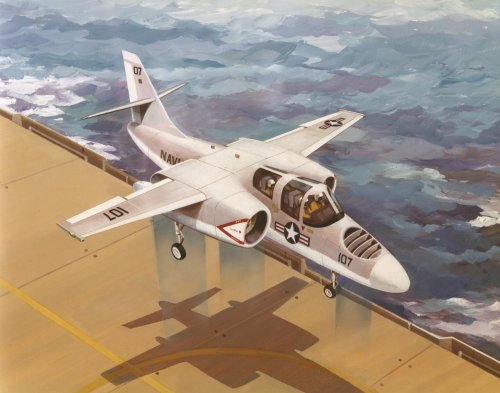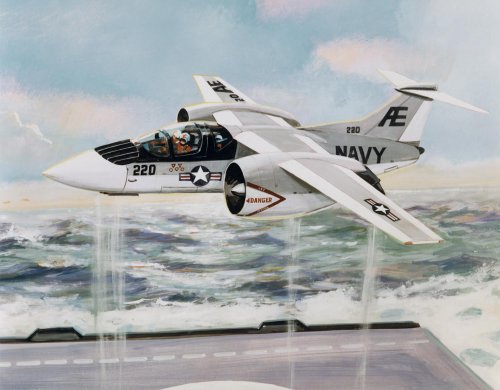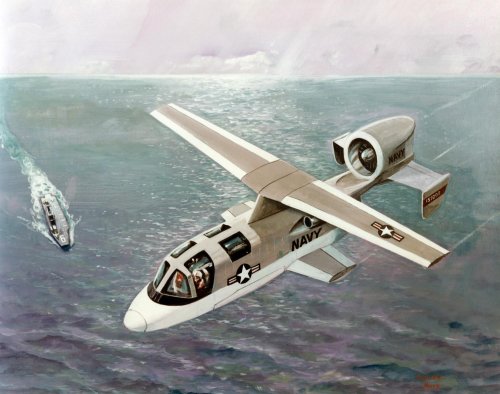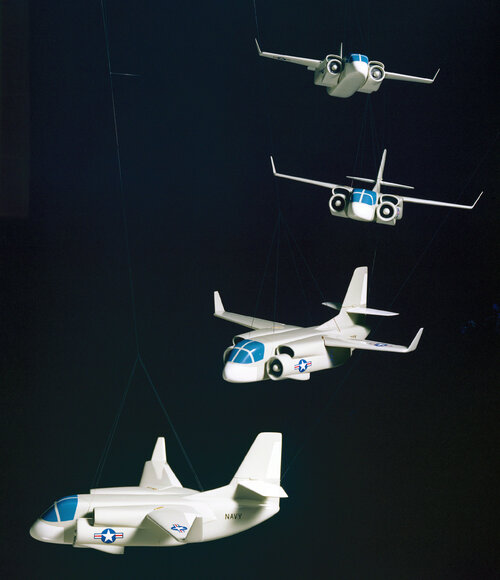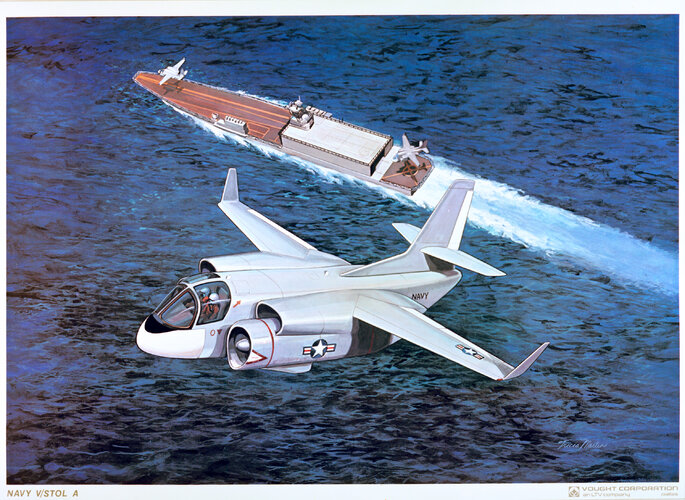4.1.7 Vought
For the past several years, Vought has studied a medium-speed concept (V-530) that features a tandem-fan propulsion system (Refs. 25 and 26). Figure 45 is an artist's rendering of an early V-530 configuration which emerged from studies in support of the Navy's "Type A" subsonic multimission V/STOL notional requirements.
The aircraft is a high wing monoplane with moderate-aspect-ratio wing and winglets, and with two shoulder mounted engine nacelles. The V/STOL propulsion system is essentially self-contained in the two nacelles. Each nacelle contains a core engine, two fixed-pitch fans with variable-inlet guide vanes, and associated inlets and nozzles.
Figure 46 illustrates the tandem-fan propulsion concept. Two fans on a common shaft are located ahead of, and are directly driven by, a turboshaft engine. Small fan diameters resulting from the use of two fans in each nacelle permit direct drive by the core engine with no reduction gear between engine and fans. Also, the tandem placement of these relatively small fans results in a smaller nacelle diameter and therefore reduced drag. Each fan has its own inlet and nozzle, and flow through the two fans is maintained separately at all times. The forward inlet supplies air to the front fan, which has a nozzle that can be vectored from a vertical position for hover, to an intermediate position for transition, and to an aft position for cruise (Fig. 46). The upper inlet feeds both the aft fan and the core engine (which is supercharged by the aft fan). The core and aft fan flows are mixed and discharged through the aft nozzle. This nozzle is also vectorable for VTOL and up-and-away flight.
Figure 47 illustrates the propulsion system arrangement in the two nacelles and the cross shafting between the two nacelles. Acommon fan size is used in all four fan applications. Power is transferred from the gas turbine in one nacelle through the cross shaft to the fans in the opposite nacelle to maintain thrust symmetry during single-engine operation or to prOVide asymmetric thrust for lateral control during hover. Variable inlet guide vanes on each fan provide thrust modulation for pitch and roll control (Fig. 48). Differential deflection of the left and right nacelle nozzles provides yaw control.The forward two-dimensional nozzle uses a two-piece deflector for vectoring thrust (Fig. 46). Variation of nozzle area in cruise is achieved with a small flap mounted on the nacelle surface. The aft two-dimensional nozzle vectors mixed flow from the core engine and aft fan. The nozzle deflector is hinged along the lower portion of the nacelle and rotates downward for vertical flight. A rotating lower flap is used to achieve thenozzle areas required for cruise.
Vought has conducted a number of tests of the tandem-fan configuration and propulsion system components over the past several years. These have included a series of inlet tests with NASA Lewis Research Center, front and rear nozzle tests, powered model tests to evaluate ground effects, and low-speed wind-tunnel tests. References 25-33 describe some of these activities.

